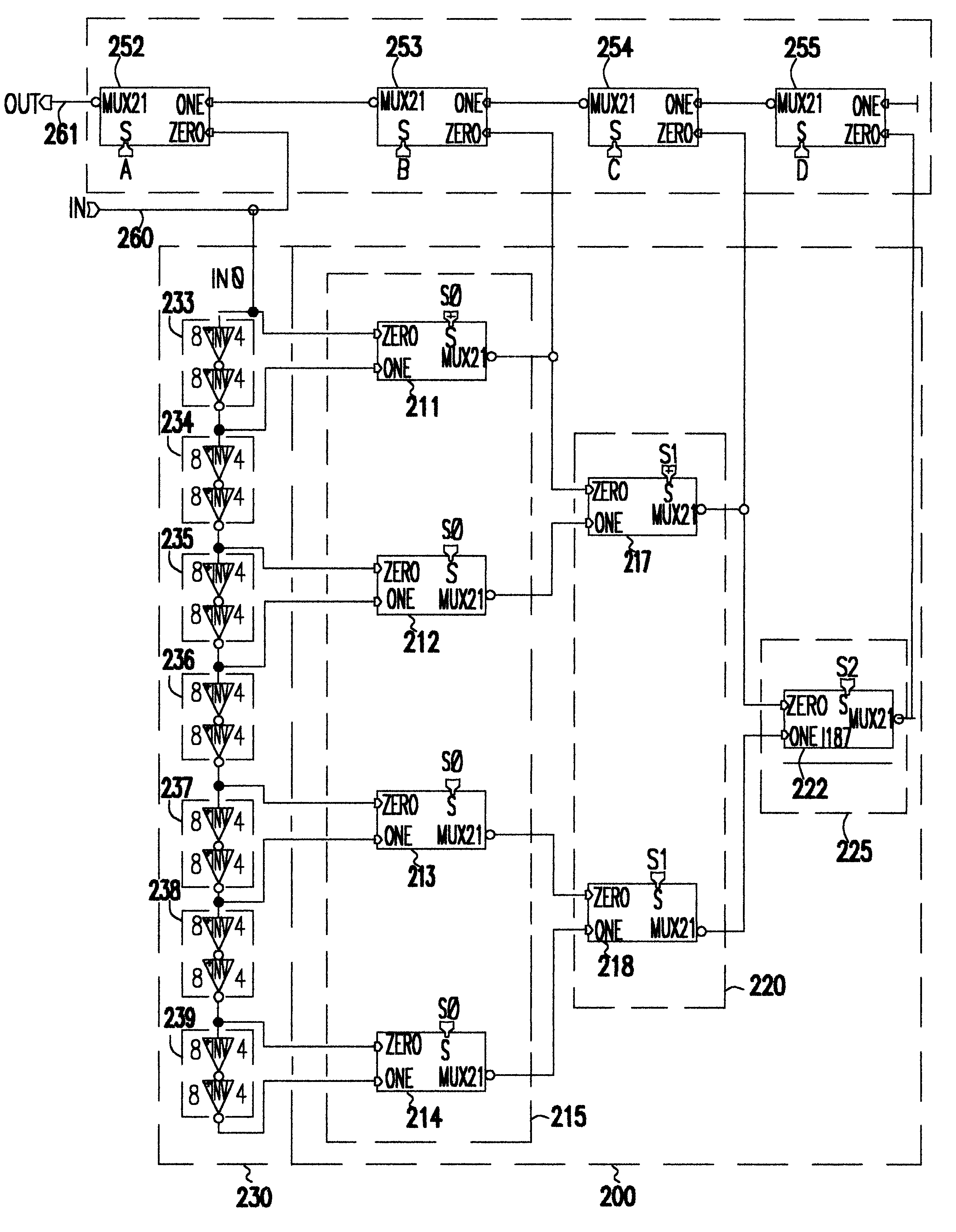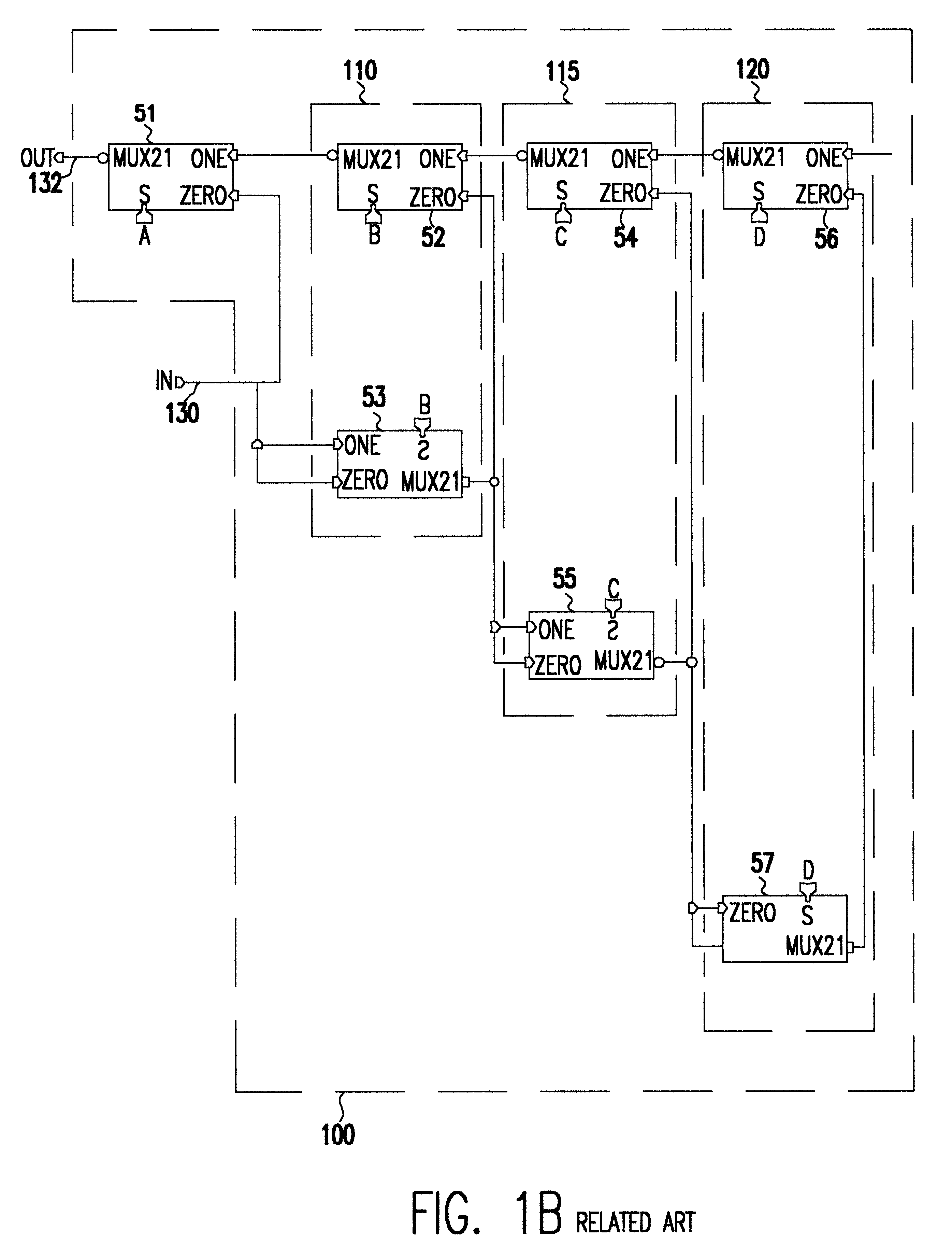Digital delay line with low insertion delay
a delay line and low insertion delay technology, applied in the field of digital circuits, can solve the problems of delay elements consuming significant chip space, longer propagation times, and inability to carry out intended functions
- Summary
- Abstract
- Description
- Claims
- Application Information
AI Technical Summary
Benefits of technology
Problems solved by technology
Method used
Image
Examples
Embodiment Construction
Referring now to the drawings, and more particularly to FIG. 1A, there is shown a schematic diagram of a first alternative embodiment of a delay line over which the present invention is an improvement. It is not admitted that the delay line shown in FIG. 1A is prior art. FIG. 1A is provided to facilitate an understanding of the present invention. Accordingly, FIG. 1A is labeled as "Related Art".
In this embodiment, a multiplexer (mux) array 10 contains seven 2:1 muxes wherein the outputs of four muxes 11-14 in a first logic layer 15 become the inputs to two muxes 17-18 in a second logic layer 20, and the outputs of the muxes 17-18 in the second logic layer 20 become the inputs to the seventh mux 22 which alone constitutes a third logic layer 25. The propagation delay through the three layers illustrated 15, 20, and 25 is equal to three times the delay through a single 2:1 mux. More logic levels could, of course, be provided for a larger delay range (or higher delay resolution or a co...
PUM
 Login to View More
Login to View More Abstract
Description
Claims
Application Information
 Login to View More
Login to View More - R&D
- Intellectual Property
- Life Sciences
- Materials
- Tech Scout
- Unparalleled Data Quality
- Higher Quality Content
- 60% Fewer Hallucinations
Browse by: Latest US Patents, China's latest patents, Technical Efficacy Thesaurus, Application Domain, Technology Topic, Popular Technical Reports.
© 2025 PatSnap. All rights reserved.Legal|Privacy policy|Modern Slavery Act Transparency Statement|Sitemap|About US| Contact US: help@patsnap.com



